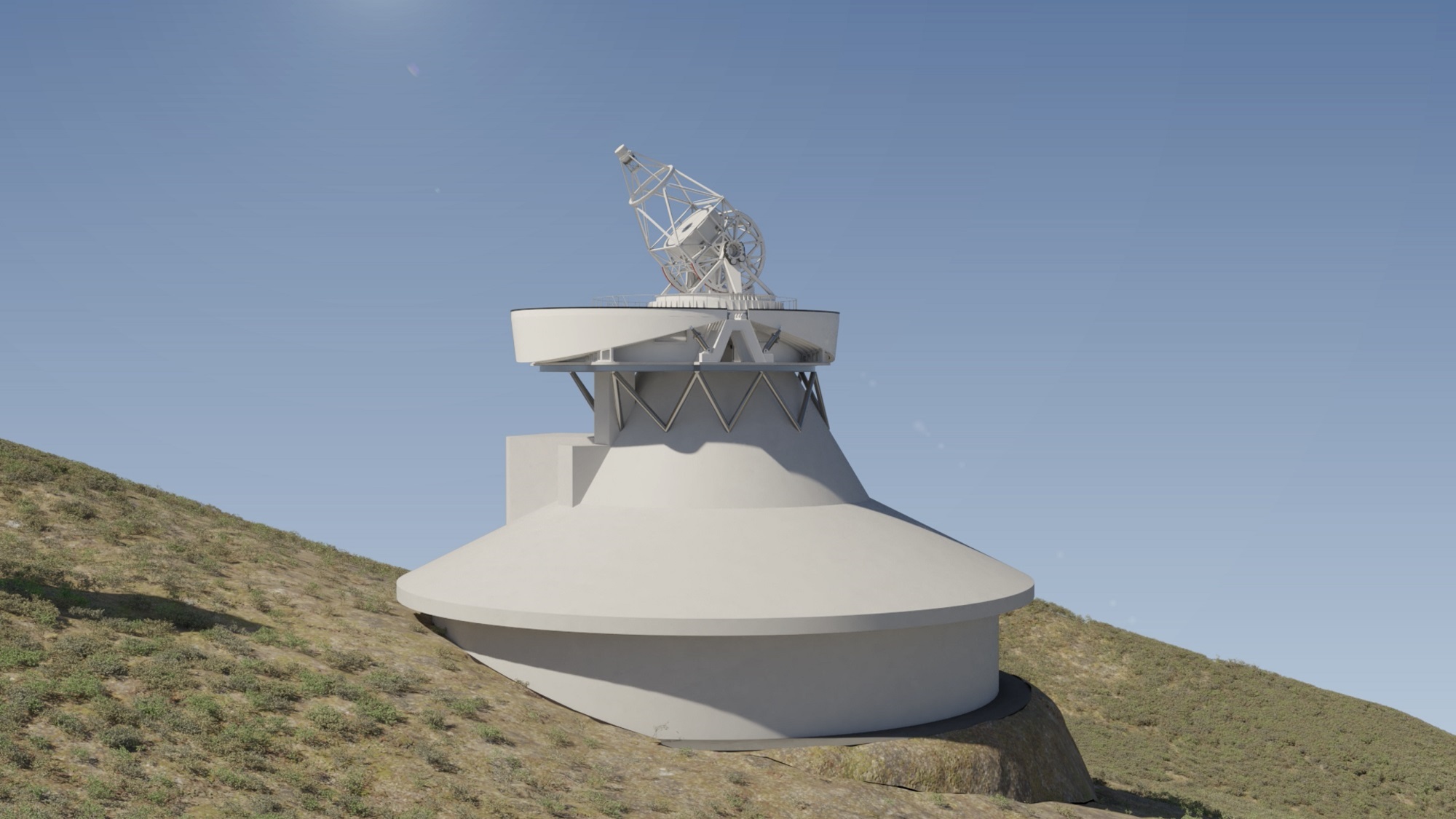Aberystwyth physicists collaborate on solar telescope project

A representation of what the European Solar Telescope will look like when constructed at the observatory in La Palma, Spain. Credit: IDOM
26 July 2023
Aberystwyth University is part of an international collaboration to build the biggest solar telescope ever constructed in Europe.
The European Solar Telescope (EST) project aims to provide unparalleled new insights into the phenomena of space weather.
The project involves the collaboration of several European countries, including the UK.
Aberystwyth University is a member of a consortium of UK universities which will help to develop designs for the construction of the large-aperture solar telescope, which will be located at the world-renowned El Roque de los Muchachos Observatory, at La Palma in Spain.
Launched in 2008, the EST project aims to provide valuable insights into the mechanisms underlying solar flares and coronal mass ejections.
These events determine so-called ‘space weather’, which can lead to geomagnetic storms on earth - seen as the northern lights - and have a strong influence on our technological society.
The United Kingdom Universities Consortium (UKUC) is led by the University of Sheffield; and involves Aberystwyth, Belfast, Durham, Exeter and Glasgow Universities.
Professor Huw Morgan, Head of Solar System Physics at Aberystwyth University, said:
“Aberystwyth University is proud to be a member of the UK consortium for the European Solar Telescope. This builds on our long history of involvement in international missions and facilities that are dedicated to improving our understanding of the solar system. Over recent years, our researchers have made key discoveries of the Sun based on data from current ground-based solar telescopes. We are therefore excited to be part of the European-wide network of organisations who will collectively push towards the construction of this new facility.”
Professor Robertus von Fay-Siebenburgen from the University of Sheffield’s School of Mathematics and Statistics is principal investigator for the UKUC project. He said:
“The EST will be the biggest ground-based solar telescope constructed in Europe and will keep its European partners at the forefront of solar physics research… This kind of unrivalled research infrastructure will provide European astronomers and plasma-astrophysicists with an extraordinary tool for observing the Sun and its space weather, one that will pave the way for scientific advancements in some of the world’s biggest and most important challenges, such as the development of green fusion energy.
“By being able to study the physical processes happening in the solar chromosphere in such detail for the first time, we will gain new insight into how the heating mechanisms occur that underpin the plasma heating processes. Learning from how nature does it will help us explore how to replicate the process for the benefit of humankind.”
One of the EST’s primary objectives is to improve understanding of the Sun by observing its magnetic fields in unprecedented detail. Once operational, it will be able to uncover signals currently hidden in the noise and reveal the existence of unknown, tiny magnetic structures.
The preliminary design phase of the telescope, which was funded by the European Commission’s Horizon 2020 programme, has recently been completed. After a construction period of six years, the EST’s first light - or becoming operational - is planned for 2028-2029.
For more information about the project, please visit: www.est-east.eu



